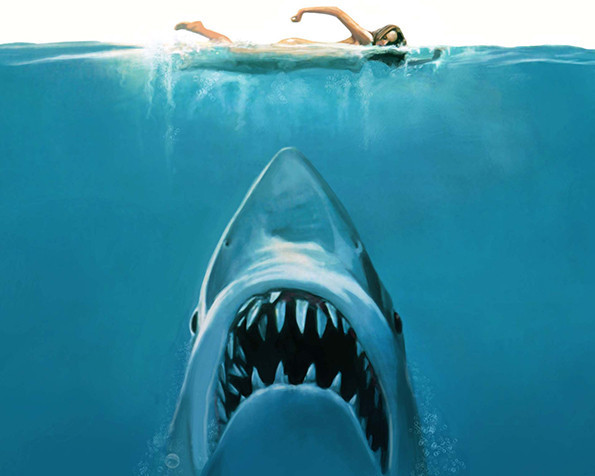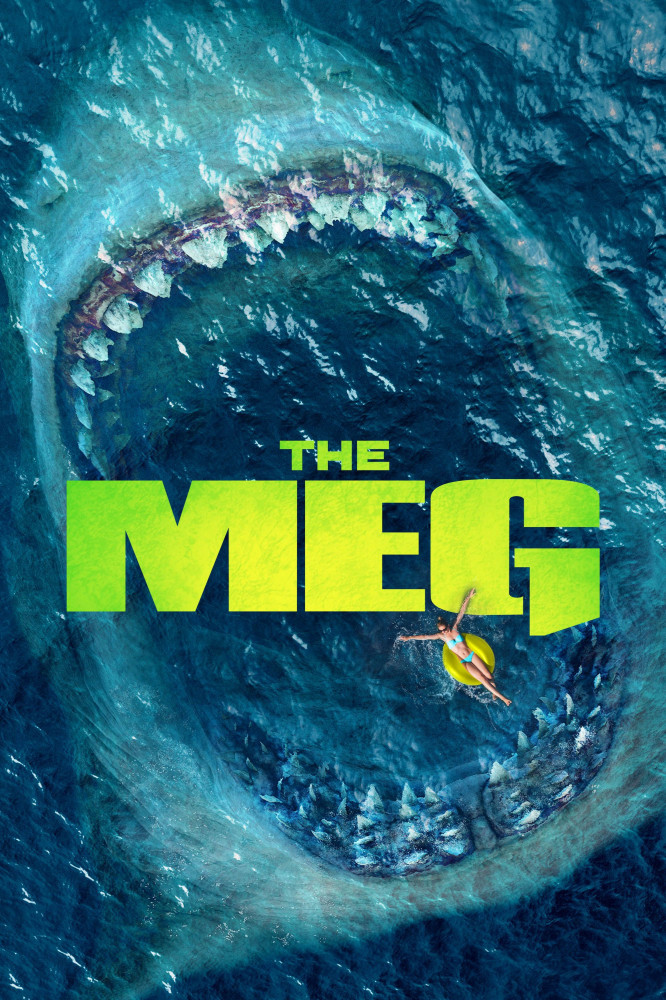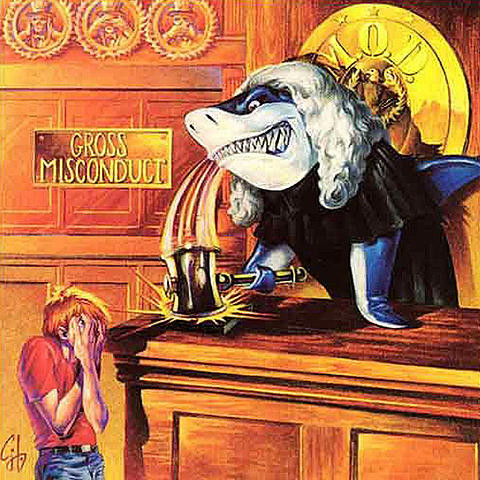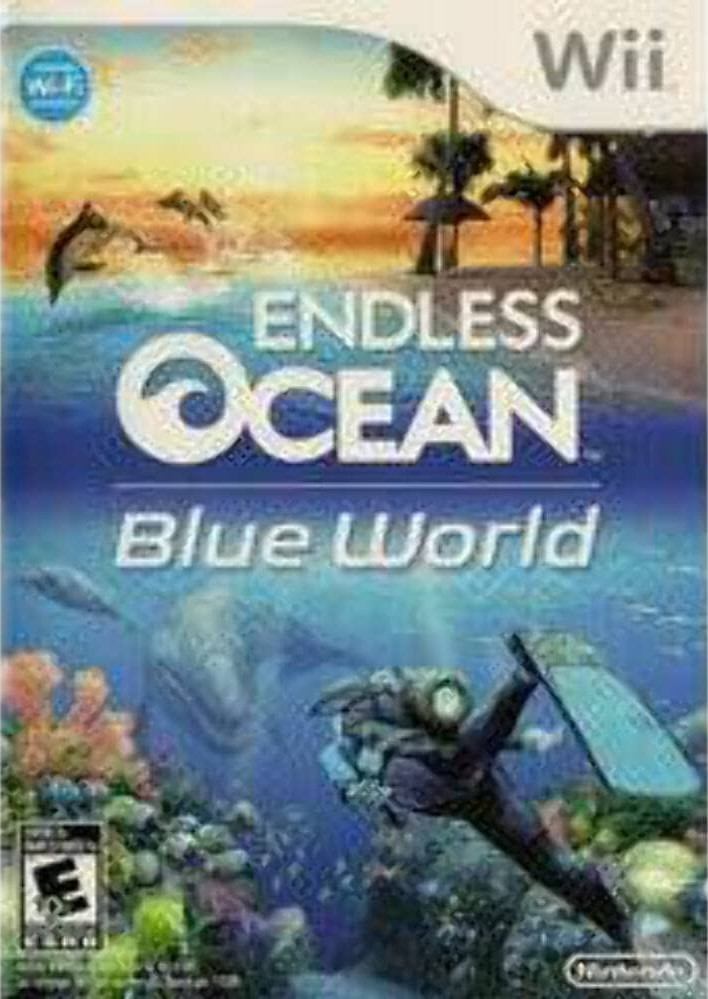
Sharks in Popular Culture: From Movies to Art
The ocean is a mysterious and fascinating part of our planet teeming with life, and one of its most iconic inhabitants is sharks. Sharks have been portrayed in films throughout the decades, from suspenseful Jaws-inspired thrillers to adventure blockbusters—all inspiring awe among spectators. The presence of sharks can also be found in several forms of art that convey complex messages about ecology and our relationship with these majestic animals. In this blog post, we’ll look at actual shark encounters on-screen and off as humans explore their place in popular culture. From Hollywood’s habitation with the fearsome predators lurking beneath the surface to artistic reflections pushing the boundaries between fantasy and reality, let us dive deep into how sharks continue to influence society even today!
From “Jaws” to “The Meg”
Sharks have always been a fascination in the movie industry. Their aggressive nature and sharp teeth make them perfect subjects for thrillers and horror flicks. It all started with “Jaws,” which is considered the godfather of all shark movies. Ever since then, sharks have been a popular topic in Hollywood and have had various portrayals across different movie genres. From misunderstood creatures to vicious predators, sharks have kept viewers on the edge of their seats.
subjects for thrillers and horror flicks. It all started with “Jaws,” which is considered the godfather of all shark movies. Ever since then, sharks have been a popular topic in Hollywood and have had various portrayals across different movie genres. From misunderstood creatures to vicious predators, sharks have kept viewers on the edge of their seats.
“Jaws”: The film that started it all
“Jaws” was a movie released in 1975 that changed the way sharks were portrayed in movies. It was a thriller that sparked the fear of sharks in people, leading to global paranoia. It scared people to swim in the ocean, even though the chances of being attacked by a shark are extremely low. The movie was known for its suspense, thrilling plot, and ingenious marketing campaign. The movie’s success led to cultural references, such as “You’re gonna need a bigger boat,” and parodies like “Jabberjaw,” a cartoon series about a talking shark. The impact of “Jaws” on pop culture is undeniable and has led to several sequels and documentaries about sharks.
Evolution of shark movies
The success of “Jaws” led to many other shark movies across various genres. Shark movies have ventured beyond horror and thrillers to documentaries that explore the depths of the ocean and the different species of sharks. Some notable shark movies include “Deep Blue Sea,” “The Reef,” and “47 Meters Down.” These movies provided a variation of movies surrounding sharks and their behavior. They explored different approaches to the genre like “Deep Blue Sea,” which was a shark horror movie where sharks were genetically engineered to cure Alzheimer’s disease. Or “The Reef,” which was a survival horror film following the lives of four surfers stranded in the ocean, trying to avoid shark-infested waters. Shark movies have continued to evolve throughout the years with the use of CGI and special effects, making them even more realistic.
Shark portrayals in movies

Sharks have been portrayed differently throughout various movies. From “Jaws,” which portrayed sharks as vicious predators to “Shark Tale,” an animated movie where sharks are friendly mobsters. The portrayals change depending on the audience they are intended for. Movies targeting adults tend to lean towards the vicious predator portrayal to create thrilling and suspenseful plots. On the other hand, children’s movies tend to give sharks a more friendly approach, promoting environmentalism and the conservation of these animals.
Sharks have come a long way in the entertainment industry. From the fear conjured by “Jaws” to the friendly sharks in “Finding Nemo,” the way sharks are portrayed in the cinema is an indication of how society as a whole views them. Shark movies do have an impact on pop culture and impart knowledge about the ecosystem and marine life making it essential to remember that sharks play an important role in the environment.
Shark-Infused Stories: Literature Through the Ages
The sight of a shark gliding through the water has stirred the human imagination for centuries, and this fascination has spilled over into literature. Sharks have a special place in literature, ranging from barely mentioned predators to complex symbols representing darkness and danger. The literature that is inspired by these lethal creatures is proof of the incredible power of the shark. From the early references in mythology to modern-day works of literature and prose, over the centuries, writers worldwide have drawn inspiration from sharks.
Early literary references to sharks
The earliest known references to sharks come from mythology and some interpretations of the Bible where it is mentioned as a symbol of death and destruction. However, it wasn’t until the 1800s that sharks started appearing in literature in a significant manner. In Herman Melville’s classic “Moby-Dick”, Tashtego is described as diving in with a harpooned sperm whale to help process it and secure it from sharks. Jules Verne described a more thrilling account between Gillian and an unforgiving Great White Shark that had rogue intentions in the oceanic fantasy adventure “Twenty Thousand Leagues Under the Sea”.
Shark symbolism in Classic literature
Sharks have captivated the human imagination since time immemorial and have found their way into various art forms, including literature. Shark imagery and symbolism have been used extensively in classic literature to represent strength, power, danger, and unpredictability.
A perfect example of this is the novel, The Old Man and the Sea by Ernest Hemingway. In this tale, a Cuban fisherman struggles with a giant marlin, that is ultimately attacked and eaten by sharks which represents the destructiveness and unpredictability of nature and the sea.
Modern shark-themed novels
Since the twentieth century, sharks have continued to play a significant role in literature. In the 70s, the novel Jaws made famous a great white shark as a terrifying predator, scaring a generation of beach-goers and spawning a successful movie franchise. More recent works such as Susan Casey’s non-fiction “The Devil’s Teeth” explores the complex relationships that exist between humans and sharks and Steve Allen’s “The Meg” which is a work of fiction about an ancient giant shark species that is believed to be extinct.
Impact of shark literature on public perception
Shark novels and other forms of writing can have a significant influence on how these magnificent creatures are perceived. Earlier literature portrayed these predators as ruthless and violent creatures, while more contemporary works have highlighted the critical role sharks play in the marine ecosystem.
Sharks in Television: Educating, Entertaining and Controversial
Sharks have been a popular topic of interest in television programs for years mostly in the form of documentaries that focus on education and conservation. While some of these programs aim to increase public awareness and understanding of these fascinating creatures, others tend to be more controversial, raising ethical considerations.
Documentaries

Shark documentaries are one of the best sources for learning about these magnificent creatures. Many of these programs focus on educating the public about shark biology and behavior, their importance in the ocean’s ecosystem, and the threats they face, including pollution, climate change, overfishing, and habitat destruction. For example, “Blue Planet II” and “Planet Earth II,” both produced by the BBC, provide stunning visuals of sharks alongside other ocean creatures and feature narration that explains their behavior and habitats.
Some documentaries go beyond educating and focus on conservation efforts. For instance, “Shark Week” in the past few years, tends to highlight the critical role of sharks in the ocean’s ecosystem and the threats they face, such as finning and shark meat consumption. There were however controversies surrounding Shark Week’s programming which aired a special in 2013 that presented the giant prehistoric shark, megalodon, as still living today, which was later debunked.
Sharks have remained a popular topic on television for many years, providing educational and entertaining options for viewers. Shark documentaries aim to increase public awareness and understanding of these magnificent creatures, while reality shows mostly focus on entertainment and some possible conservation efforts. These programs have faced criticism for promoting unethical practices or perpetuating shark misconceptions, highlighting the need to be more mindful of the messages conveyed. Overall, shark television programming remains an essential tool to increase public understanding and appreciation of these often-misunderstood creatures.
Sharks in Art: From Ancient Depictions to Contemporary Interpretations
Sharks have long been a source of fascination, fear, and inspiration for people all over the world. From ancient depictions to modern and contemporary interpretations, these fascinating creatures have captured the imagination of artists from diverse cultures and styles.
Ancient shark depictions
Sharks have been depicted in art for thousands of years, with some of the earliest examples coming from ancient Egypt, where they were revered as symbols of power and protection. In ancient Greek and Roman art, sharks were often depicted with other sea creatures in bathhouses and on pottery. In ancient Chinese art, sharks were depicted alongside other sea creatures or as standalone motifs, showcasing the artistic incorporation of sharks in decorative arts.
Sharks as symbols in art movements
Sharks have continued to feature in art movements across the world, including the Romantic period, where they were viewed as agents of nature’s sublime and terrifying power. In the 20th century, sharks became prominent symbols in pop and street art, with artists such as Keith Haring, Banksy, and Damien Hirst featuring sharks in their works. Hirst, in particular, is famous for featuring sharks in formaldehyde tanks, exploring themes of death and decay.
as agents of nature’s sublime and terrifying power. In the 20th century, sharks became prominent symbols in pop and street art, with artists such as Keith Haring, Banksy, and Damien Hirst featuring sharks in their works. Hirst, in particular, is famous for featuring sharks in formaldehyde tanks, exploring themes of death and decay.
Artists Inspired by Sharks
Numerous contemporary artists have been inspired by sharks, using them as subject matter or source material for their works. For example, environmental artist Nancy Baker Cahill created an augmented reality art installation called “Margin of Error,” which explores the impact of climate change on marine life, including sharks. Photographer Michael Muller’s photographs of sharks have been featured in films, advertisements, and galleries, highlighting both their beauty and vulnerability.
Shark art has evolved over the centuries, reflecting changing attitudes towards these fascinating creatures and their place in the natural world. Whether ancient depictions or modern-day interpretations, sharks have inspired artists across cultures and styles, highlighting their diversity, beauty, and power. As we face growing environmental challenges, sharks continue to represent both the delicacy and strength of the natural world and their images and symbolism will continue to inspire artists and viewers alike, reminding us of our synergy with the oceans and its creatures.
Sharks in Fashion and Design: The Evolution of Shark-Inspired Style
Sharks are often viewed as terrifying predators of the sea. However, their unique and fascinating physical features have also made them a popular source of inspiration for fashion designers. From clothing to various accessories, sharks have become a trend in the fashion world, influencing many styles and designs. In addition to aesthetics, designers have also used sharks to raise awareness and support conservation efforts.
Shark-Inspired Fashion Trends
The popularity of sharks in fashion began with clothing and accessories featuring shark motifs. These designs were first  seen in the late 1970s to mid-1980s, mainly on t-shirts and sweatshirts. Today, shark-inspired fashion has evolved beyond the basic t-shirt design into various items such as bags, shoes, and hats. The shark motif is not limited to animal prints or shapes; designers have also incorporated shark features like shark teeth, jaws, and fins into their designs.
seen in the late 1970s to mid-1980s, mainly on t-shirts and sweatshirts. Today, shark-inspired fashion has evolved beyond the basic t-shirt design into various items such as bags, shoes, and hats. The shark motif is not limited to animal prints or shapes; designers have also incorporated shark features like shark teeth, jaws, and fins into their designs.
Interestingly, shark fashion trends also extend the influence of shark aesthetics on design, including furniture and home decor. Designers have incorporated shark silhouettes into lamps, coffee tables, and even beds, making shark-inspired designs accessible to the general public.
Shark Conservation and Fashion Collaborations
In recent years, many brands have used shark designs to raise awareness of the urgent need to protect sharks. As apex predators, sharks play a crucial role in maintaining marine ecosystems. Unfortunately, shark populations worldwide have been in decline due to overfishing, bycatch, and the trading of shark fins. Fortunately, fashion can contribute to shark conservation and create collaborations that help save their populations.
Brands like Vans, TOMS, and Sand Cloud partnered with advocacy groups to support shark causes, with a portion of their profits going toward conservation efforts. A variety of high-end brands have also joined the collaboration efforts to raise funds for shark-related causes. These collaborations bring together fashion-forward designs and activism, providing avenues for a more significant impact on the plight of sharks.
Ethical Considerations in Using Shark-Inspired Materials
While shark designs can raise awareness and support conservation efforts, it’s important to consider the environmental and ethical ramifications of using shark-derived materials, such as sharkskin and shark leather. In the fashion industry, exotic animal skins have been used for centuries. However, the use of these materials is becoming more controversial due to animal welfare concerns and environmental impact.
Designers have started exploring alternative materials to replace shark-derived products. These alternatives include vegan leather, recycled plastics, and plant-based materials. While these materials may not have the same texture and feel as genuine shark leather, they are more sustainable and animal-friendly.
Sharks have made a significant impact in the world of fashion and design, inspiring various trends and styles. While shark motifs have influenced fashion aesthetics significantly, they have also served as a platform to raise awareness about the declining shark populations worldwide. The collaborations between fashion brands and shark advocacy groups bring together creativity and activism and contribute to the important work of saving sharks. In promoting conservation efforts, designers must also consider the environmental and ethical implications of using shark-derived products. By seeking sustainable alternatives, fashion can continue to evolve in a way that helps save the oceans and all marine life that resides in them.
Jaws in the Beat: Sharks in Music and Pop Culture
Sharks have been one of the most feared creatures of the ocean, inspiring awe and respect from humans for centuries. It’s only natural that they have become an element of art, literature, and pop culture. Music, specifically, has been influenced by the strength and mystery of these magnificent creatures. From songs to album covers and music videos, sharks have found their way into the world of music.
Songs and Lyrics
Shark-inspired songs and lyrics have been in the music scene since the 1960s. One of the most iconic and memorable shark-themed tunes is John William’s Jaws soundtrack, which features an ominous and suspenseful tune that has become synonymous with sharks. But Jaws is not the only musical inspiration we can find in this ocean predator. The progressive rock band Toto composed a song called ‘Mama Told Me Not to Come’, referencing a “big old shark” coming after the narrator. Other shark-referenced songs include ‘Shark Attack’ by Split Enz, ‘Sharks’ by Pixies, and ‘Shark Smile’ by Big Thief.
However, shark-inspired music is not limited to the lyrics; it is also reflected in the aesthetics surrounding album covers and music videos. Among metal bands, the shark has become a popular figure for album covers. The visual elements of sharks in music are drawn from the themes of power and danger the creatures evoke.
music videos. Among metal bands, the shark has become a popular figure for album covers. The visual elements of sharks in music are drawn from the themes of power and danger the creatures evoke.
Exploring themes of fear, power, and danger is not new to music. These emotions have been emphasized time and time again in various genres and songs. But the particular perception of sharks in popular culture speaks to the more primal side of human psychology. The mystery and might of the creatures trigger visceral reactions, ranging from awe to terror. The shark serves as a metaphor that goes beyond the physical, representing the unknown, and harboring the potential to triumph over human power.
Symbols and metaphors in shark-related music can be interpreted in many ways. Some see the creatures as the embodiment of fear, being a force to be feared. Others view them as symbols of more profound forces of nature. The quest to understand and explore these emotions, from dread to fascination, lies in the very essence of art. Music is no exception, and sharks have provided new pathways to explore.
Sharks in Video Games: From Popular Shark Games to Influencing Player Attitudes
Sharks being one of the most fascinating creatures on earth, often have a negative reputation in popular media. Video games, however, have the potential to change how people view these magnificent creatures. From shark-themed games to shark characters in popular video games, sharks have become a popular topic in the gaming world.
Shark-themed video games have gained immense popularity over the years, with popular titles like “Hungry Shark Evolution” and “Jaws Unleashed” to the fairly recent “Maneater”. These games immerse players in the life of a shark, allowing them to swim, hunt, and explore the ocean. The impact of these games is evident in how they have influenced popular culture. People are now more interested in sharks, and their understanding of these creatures has increased, leading to a more positive attitude toward them.
What’s more, video game developers have incorporated sharks into educational games that gamify shark behavior and biology. These games teach players about the biology and behavior of these marine animals in a fun and engaging way. For instance, in “Endless Ocean Blue World”, players can learn about different species of sharks, their habitats, and behaviors. By gamifying education, these games not only increase knowledge of sharks but also make it enjoyable.
Sharks have also been portrayed as characters in popular games such as “Grand Theft Auto V,” “Assassin’s Creed IV: Black Flag,” and “Far Cry 3.” These games mostly have a negative representation of sharks. In “Assassin’s Creed IV,” for instance, players can hunt sharks and sell their fins and meat for profit. This portrayal of sharks as a commodity reinforces the negative perception of sharks as a threat to humans and a source of income for humans.
Sharks in Popular Culture: An Enduring Presence
Sharks in popular culture are often portrayed as vicious killers. But over time, our perceptions of these animals have shifted. In the early days of film and television, sharks were cast as mindless killing machines. However, in recent years, more documentaries and nature-based shows have portrayed them in a more balanced light that showcases the beauty and importance of these animals to our environment. This shift in thinking has helped to dispel many of the myths that earlier media had created. Many researchers now use the ocean’s top predators as barometers for the health of the ocean ecosystem. Sharks are also studied for potential medical applications, such as in wound healing and cancer research.
Sharks have infiltrated various aspects of society in creative ways, from movies and shows to toys and merchandise. By taking advantage of the popularity of these magnificent animals, we can raise awareness about the importance of marine conservation and the need to protect our oceans’ most important inhabitants. Sharks may be feared by some, but we can all agree that they are an essential part of the ocean ecosystem and worthy of our protection.
FAQ
1. Why are sharks often portrayed as villains in movies?
Sharks are often portrayed as villains in movies due to their reputation as apex predators and their association with danger and fear. The media has contributed to creating a sensationalized image of sharks as relentless killers, perpetuating negative stereotypes. These portrayals attract audiences seeking suspense, thrill, and dramatic tension, even though they may not accurately represent the behavior and nature of sharks in reality.
2. How do sharks inspire artists and musicians?
Sharks inspire artists and musicians in various ways. The power, beauty, and mystique of sharks serve as a source of inspiration for creative expression. Artists may depict sharks in visual artworks, using their imagery to convey strength, danger, or even as symbols of resilience and survival. Musicians may incorporate shark-related themes, lyrics, or sounds into their music to evoke specific emotions or narratives, often tapping into the fascination and intrigue surrounding these creatures.
3. What are some famous shark-related artworks?
There are several famous shark-related artworks. One notable example is Damien Hirst’s artwork titled “The Physical Impossibility of Death in the Mind of Someone Living,” which features a preserved tiger shark suspended in formaldehyde.
4. Are there any shark conservation success stories?
Yes, there have been some shark conservation success stories. For instance, the banning of shark finning (the practice of cutting off shark fins and discarding the rest of the shark) has been implemented in many countries and international waters. Some areas have established marine protected areas where sharks are safeguarded from overfishing and habitat destruction. Conservation efforts have led to increased awareness and stricter regulations on shark fishing, helping to stabilize certain shark populations.
5. How can individuals contribute to shark conservation efforts?
Individuals can contribute to shark conservation efforts in several ways:
- Support sustainable seafood choices: Avoid consuming shark products or seafood associated with unsustainable shark fishing practices.
- Promote awareness and education: Share information about the importance of shark conservation with others. Raise awareness about the misconceptions surrounding sharks and their vital role in marine ecosystems.
- Participate in conservation initiatives: Get involved with organizations and projects dedicated to shark conservation. Support research, advocacy, and initiatives that work towards protecting sharks and their habitats.
- Practice responsible tourism: If engaging in shark-related tourism activities, choose reputable operators that prioritize the well-being of sharks and follow guidelines for responsible interactions.
- Reduce plastic waste: Help prevent marine pollution by reducing your use of single-use plastics. Plastics in the oceans can harm sharks and other marine life through entanglement or ingestion.
- Support legislation and policy changes: Stay informed about shark conservation policies and support efforts to enact or strengthen regulations that protect sharks from overfishing, finning, and habitat destruction.
As an Amazon Associate, I earn from qualifying purchases.

